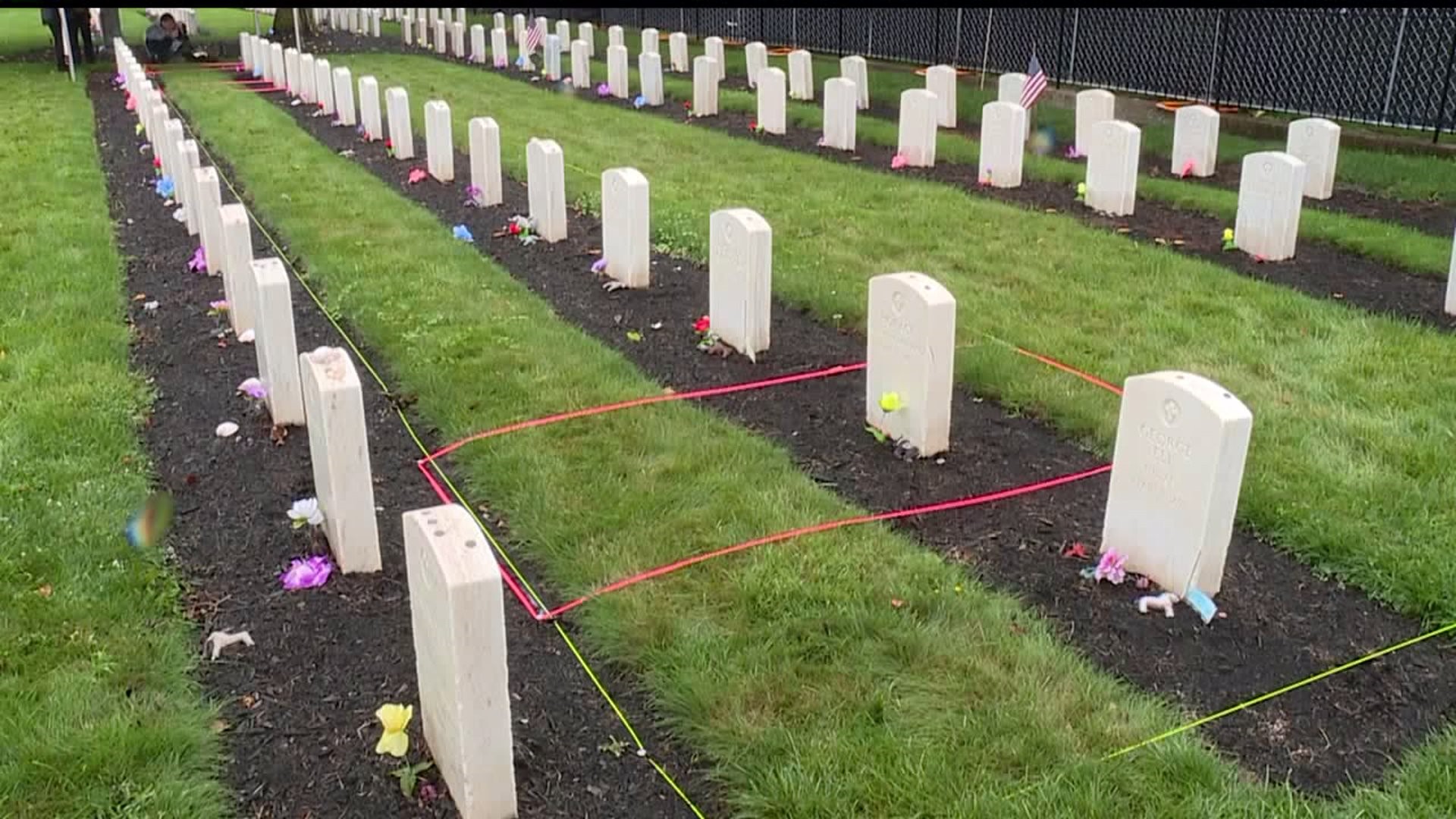CARLISLE, Pa. -- The remains of three Native American boys buried in Carlisle Barracks Post Cemetery will be moved to their final resting place.
Starting Tuesday, a group of experts will work to reunite the Northern Arapaho Tribe with the remains more than 130 years later.
Little Plume (Hayes Vanderbilt Friday), Little Chief (Dickens Nor), and Horse (Horace Washington), are all resting at the cemetery in Carlisle. The children were buried there in the late 1800s, and the tribe requested them to be moved last year.
Art Smith, the chief of Army National Military Cemeteries, said, "I've been involved in the cemetery business for many, many years now, and it's a special mission."
Experts said the boys most likely were killed by infectious diseases while at the Carlisle Indian Industrial School and were buried in the cemetery that was eventually controlled by the Army.
A team of archaeologists, engineers and anthropologists will soon be working to uncover the grave sites.
Dr. Elizabeth DiGangi, Diplomate of the American Board of Forensic Anthropology, said, "It's really important to me it's something that I view as the pinnacle of my career to be able to help and be able to use my knowledge to help families with their grieving process and with their closure process."
Smith said, "We are not going to be using mechanical machines because we want to make sure that every inch of soil that we take out of these graves, until we find those remains, that we do it in the utmost careful manner and with the utmost respect."
The group will work to analyze the bones and teeth of the boys once they are out of the ground. The forensic team makes sure the remains match up to the age of the boys at the time of their passing, between 10 and 15 years old.
DiGangi said, "Generally after thousands of years you can have bones that are well preserved."
The experts working on the project said it's an honor to be able to help this tribe bring their boys home.
Michael "Sonny" Trimble, the chief archaeologist for the U.S Army Corps of Engineers, said, "I've got a daughter. I've got four grandchildren. To say that you don't think about who these people are and you want to have them have as much peace as possible after you do the science that's going to help these families determine that yeah they are people that we consistent with. The individuals who are buried."
The disinterment process is estimated to take about a week.

